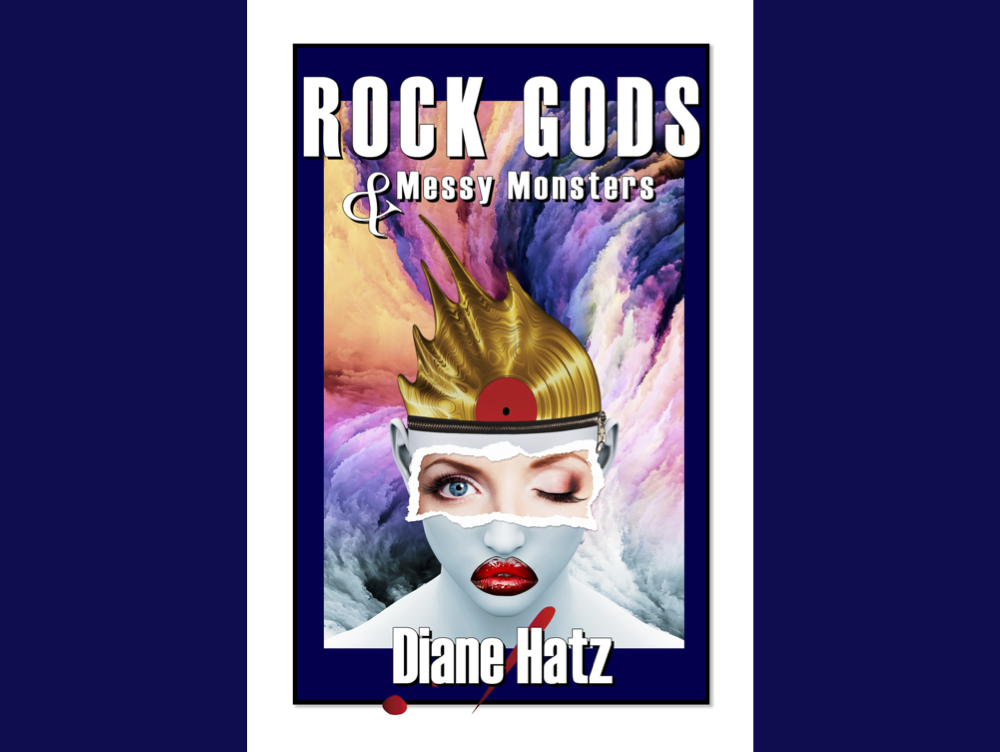Anyone who’s thought of publishing a book these days is probably aware of the debate over indie versus traditional publishing. On July 6th, I’ll be soft-launching my book Rock Gods & Messy Monsters through my recently launched publishing imprint Whole Healthy Group. In other words, I’m an indie author and publisher.
I use the term indie because I worked for an indie record label in the 1990s and believe in the punk, do-it-yourself attitude.
Let’s look at some pros and cons of the ways you can publish. There are four ways to get your book out – traditional, small press, hybrid, and indie publishing. I don’t believe in the term self-publishing because it’s still a collaborative process with others – I’ve simply chosen to do it independent of an established publishing company.
Traditional publishing
The ‘old-fashioned’ way of getting your book released is going through a book publisher. Traditional publishing is the way books have been released for many, many years. You write a book; you find an agent; the agent secures a publishing deal; you become a superstar writer.
Well, not quite. What’s missing above is time and rejection – and reality. The odds of becoming a superstar writer from one book are probably about the same as winning the lottery – though my attitude these days is that someone has to!
Months pass as you search for an agent. Unfortunately for those who want to go the traditional route, 2022 is the worst year ever for the publishing industry. Apparently, thousands and thousands of people decided to become writers during covid. I certainly can’t criticize them because I’m one of them! What that means, though, is that the reading piles of agents and publishers are massively high, and there are fewer agents and publishers still in business. That means there’s much more competition for a smaller slice of the pie.
But let’s say you’ve finished your book and are reaching out to agents. Be prepared for rejection because it can affect a writer’s self-esteem – it certainly affected me when I first tried to get published in 2008. Try to remember that bestselling writers often have their books passed over.
JK Rowling had her Harry Potter book rejected by 12 publishing houses before settling at Bloomsbury.
And a tip to new writers – don’t send an agent your first draft. Make sure you’ve edited and rewritten the novel until you think it’s ready for the bookshelf.
When you finally find an agent, odds are they’ll want you to make edits to the book, no matter how good you think it is. Then, after you’ve spent time doing the requested revisions, the book is sent to publishers. Be prepared for more rejection and more waiting.

If you are picked up by a publishing house, an in-house editor will most likely ask for even more rewrites or edits. More time. And more people telling you what to do with your piece of art. I mean, how many painters are accepted by agents and galleries and have to repaint their work?
You finish all the rewrites you’re asked to do. Now you have to wait over a year, probably two, before your book comes out. That’s a long time to see something published that you put your heart and soul into. Along the way, you might not have much control over various aspects of publishing, like the book cover or your target audience.
Authors tend to make about a dollar royalty per paperback book sold. From that, a percentage goes to your agent and others you’ve hired along the way, such as PR or marketing companies. To do your art justice, you’ll probably need to hire an outside firm or do the marketing yourself. Publishers will launch the book, but you’re most often left on your own after that. Your editor will move on to the next book on their release schedule. And you’re left wondering what happened.
I saw this happen in the music industry when I worked at a corporate record company in the 1990s.
I worked for product managers in the marketing department. (The company used the term ‘product’ manager, not ‘music’ manager. I always found that telling.) They had a list of bands and musicians they were responsible for, and it was a system. There were basic marketing plans for different types of artists, and everyone went through the motions.

I always had a lot of respect for the musicians and the A&R folks, the people who discovered the music and got bands signed to the label. But, to me, the rest of the company was mostly filled with uncreative people who weren’t necessarily good at their jobs. They loved money, power, and the illusion of glamor the entertainment industry portrays. (Trust me, it’s not glamorous once you’re in it.)
I worked in the business affairs department for a couple of years, where lawyers negotiated contracts with band managers and the band’s lawyers. I sat in a department meeting once and witnessed a discussion about ways to take more money from an artist. Many bands think the limo they’re provided or the promo event that’s put on for them is given to them by the record company, but the money for artist expenditures most often comes out of the musician’s record sales. I doubt many artists make more than their advances because so much creative accounting goes on.
My boss at the time commented to the room that musicians should all have second jobs. He felt no guilt in trying to squeeze as much money as possible from the bands. Needless to say, my mouth was hanging open. And it probably affects the way I look at book publishing today.
I don’t know how much traditional publishing follows that model, but I’m guessing it’s close. I believe that the larger a company gets, the less creative it becomes.

I also know the odds of making money beyond an advance is close to zero – in both music and publishing. So it behooves a writer to understand that if they get an advance, that’s probably the only income they’ll receive from their books.
But there are exceptions. For the stadium full of writers that only sell a few hundred books, someone is selling tens of thousands of copies – or more. I think the decision on how to publish comes down to each writer deciding what’s best for him/herself.
The significant upside to traditional publishing is that it’s less work for the writer, and you’re part of a team – at least during your book launch window. And there are those who still think publishing companies are somehow better. They believe there’s more cache to saying you’re published through X company, though not everyone feels that way anymore.
It’s pretty obvious where I stand with corporate publishing – though I would have to think twice if offered a seven-figure advance….
Next article, I’ll look at the other types of publishing.

Rock Gods & Messy Monsters is slated for a July 6th soft launch and September 7th official and ebook launch.
If you’d like to stay up to date with all things book, please join the Rock Gods mailing list. I couldn’t decide the best way to promote the book and publish articles about my work’s themes, so I’m trying out two lists.

This Substack – Diane Discovers – will continue with original articles based around themes from the Rock Gods & Messy Monsters book and pieces about the writing process. The Rock Gods mailing list will deal specifically with the book and will be more of a fanzine, with updates and snippets of information on the marketing and promotion of the novel.
I’ll evaluate it once I see how they’re both working out. It’s all very exciting!

